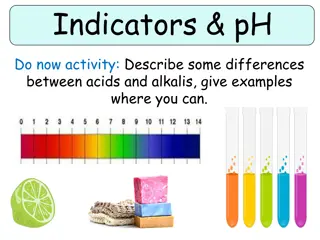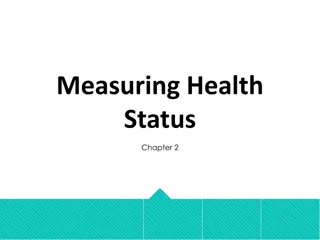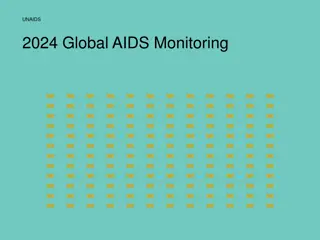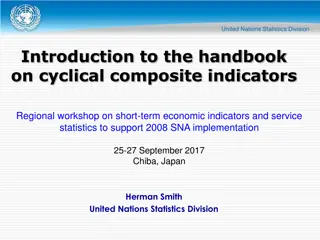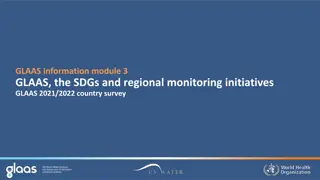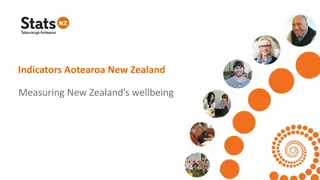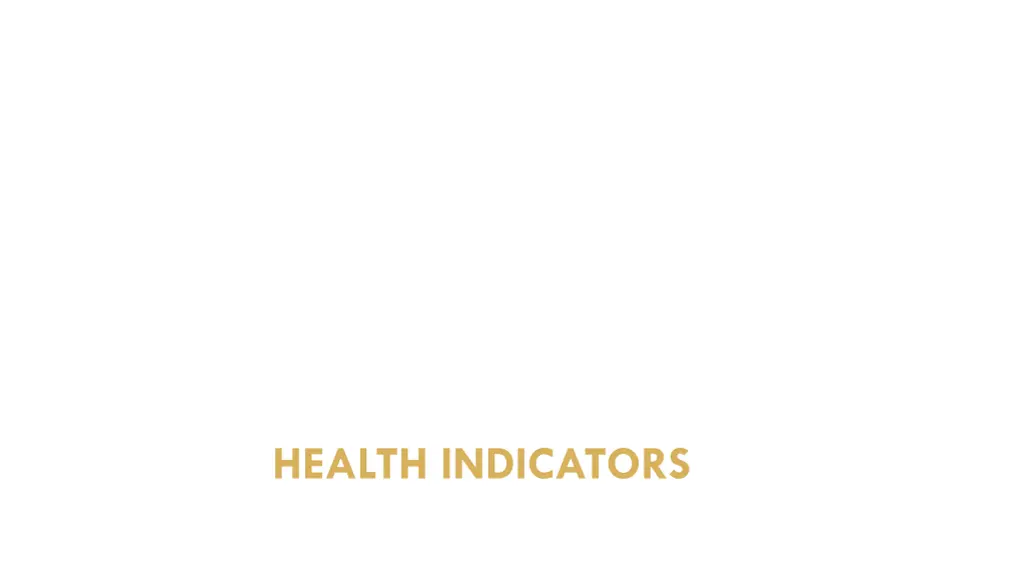
Understanding Health Indicators and Their Importance
Discover the significance of health indicators in measuring and tracking the well-being of populations. Learn about different types of health indicators, their characteristics, and how they are utilized to assess health status and prioritize interventions.
Download Presentation

Please find below an Image/Link to download the presentation.
The content on the website is provided AS IS for your information and personal use only. It may not be sold, licensed, or shared on other websites without obtaining consent from the author. If you encounter any issues during the download, it is possible that the publisher has removed the file from their server.
You are allowed to download the files provided on this website for personal or commercial use, subject to the condition that they are used lawfully. All files are the property of their respective owners.
The content on the website is provided AS IS for your information and personal use only. It may not be sold, licensed, or shared on other websites without obtaining consent from the author.
E N D
Presentation Transcript
OBJECTIVES Learning objectives Explain the need to use indicators to measure health status State the characteristics of health indicators List the uses of health indicators State with examples the types of health indicators 1. 2. 3. 4. Performance objectives Compute indicators of mortality Interpret the result of the indicator 1. 2.
DEFINITION OF HEALTH Health is a state of complete physical, mental and social well being not merely the absence of diseases or infirmity Health is measured using Health Indicators
TYPES OF HEALTH INDICATORS Morbidity indicators Mortality indicators Disability indicators Nutrition indicators Healthcare delivery indicators Healthcare utilization indicators Social and mental health indicators Socioeconomic indicators Environmental indicators 1. 2. 3. 4. 5. 6. 7. 8. 9. 10. Quality of life indicators
HEALTH INDICATORS Health indicators are Variables that measure indirectly a status which can not be measured directly They are a reflection of a given situation They are used to compare between areas or population group at a certain time They are used to measure changes over a period of time HEALTH INDICATORS QUANTIFY THE HEALTH OF THE POPULATION
CHARACTERISTICS OF HEALTH INDICATORS Health indicators should be Valid Corresponds to the actual status Measures what it is supposed to measure Reliable Precise, Reproducible Give the same results on repeated measurement by different individuals Sensitive Reflects the smallest change in the health status of the population Specific Reflects changes only in the situation concerned
Uses of Health Indicators Reflect the health status of a given population Reflect changes in the health profile of the same population over time Provide international comparison Delimit areas of health priority Diagnosis of community needs Allow evaluation of health services and specific interventions Chart progress towards specific targets Allow future projection of the health status of the population
TYPES OF HEALTH INDICATORS Morbidity indicators Mortality indicators Disability indicators Nutrition indicators Healthcare delivery indicators Healthcare utilization indicators Social and mental health indicators Socioeconomic indicators Environmental indicators 1. 2. 3. 4. 5. 6. 7. 8. 9. 10. Quality of life indicators
MORBIDITY INDICATORS Incidence rate Prevalence rate Attendance to out-patient clinics or health centers Admission re-admission discharge rate Length of hospital stay Spells of sickness or absence from school or work
MORTALITY INDICATORS Crude death rate Age specific mortality rate Infant mortality rate Perinatal mortality rate Neonatal mortality rate Post-neonatal mortality rate Mortality rate of children below 5 years of age Maternal mortality rate and ratio Cause specific mortality rate Proportionate mortality rate Life expectancy
DISABILITY INDICATORS Event-type indicators Number of days of restricted activities Number of days confined to bed Number of days lost from work Person-type indicators Limitation of mobility Confined to bed Confined to house Getting around with aids Limitation of activities Limitation of basic activities (toilet bathing) Limitation of major activities (house work or work)
DISABILITY INDICATORS Event-type indicators Number of days of restricted activities Number of days confined to bed Number of days lost from work Person-type indicators Limitation of mobility Confined to bed Confined to house Getting around with aids Limitation of activities Limitation of basic activities (toilet bathing) Limitation of major activities (house work or work)
HEALTHCARE DELIVERY INDICATORS Doctors population ratio Nurses population ratio Bed Population ratio Center or sub-center population ratio Midwives female in the fertile age group ratio
HEALTHCARE UTILIZATION INDICATORS Percentage of children attending for immunization Percentage of children attending for routine check-up Percentage of pregnant female attending for ante-natal care Percentage of pregnant female attended by a trained birth attendant Percentage of female attending family planning clinics Bed occupancy rate Bed turn over ratio
NUTRITION INDICATORS Specific nutritional indicators Percentage of the population who have low weight for age - height for age weight for height Percentage of infants born with a low birth weight Percentage of the population who have low HB level Percentage of children with clinical signs of malnutrition Percentage of those whose protein and caloric intake below the required Percentage of those who have 2 meals or fewer per day Increases in prices as a percentage increase in minimal wages Percentage of expenditure on food from total income Mortality indicators MMR IMR children <5 years Morbidity rates for certain diseases as measles and diarrhea Cause specific mortality rate as from measles and tuberculosis
SOCIOECONOMIC INDICATORS Rate of population growth Per-capita gross national production (GNP) Percentage of unemployed Percentage of literacy Average family size Crowding index Dependency ratio
SOCIAL AND MENTAL INDICATORS Rate of suicide homicide delinquency Alcohol and substance abuse rape child abuse wife abuse neglected or abandoned youth
ENVIRONMENTAL INDICATORS Percentage of the population with safe water supply inside dwellings sanitary refuse and sewage disposal living nearby a source of pollution
QUALITY OF LIFE INDICATORS Physical quality of life Averaging three indicators :Infant mortality - Life expectancy at 1 year of age - Literacy rate yielding a score on a scale ranging from 0 (worst) to 100 (best) Subjective quality of life Physical Psychological Level of independence Social relation Pain, fatigue, lack of energy Memory, concentration, self esteem Mobility, daily activity, working capacity, Personal relations, social support
MORTALITY INDICATORS Crude death rate Age specific mortality rate Infant mortality rate Perinatal mortality rate Neonatal mortality rate Post-neonatal mortality rate Mortality rate of children below 5 years of age Maternal mortality rate and ratio Cause specific mortality rate Proportionate mortality rate Life expectancy
MORTALITY INDICATORS Mortality rate is the number of deaths expressed as per 1000 or per 100 of the population among which the deaths occurred. ???? ? ?? ? ????? ?????? ?? ???? ???? ??? ? ?????????? ????? ? ?? ???? ? ???????? ?? ? ? ???? ?????? ?? ???? x Constant ????????? ???? =
Crude Death Rate (CDR) Mortality from all causes of death in a given period usually expressed as per 1000 of the estimated mid year population ????? ???? ? ?? ? ????? ?????? ?? ???? ??? ???????? ????????? ??? ???? ?????????? ?? ? ? ???? ???? ??? ???????? x 1000 ??? = Mid year population is an adjustment of the size of the population as of 1st of July of the same year
Age specific mortality rate Mortality from all causes of death among a certain age group in a given period and locality usually expressed as per 1000 of the estimated mid year population of the same age group in the same period and locality ????? ???? ? ????? ? ??????? ??? ????? ?? ? ????? ?????? ?? ???? ??? ???????? ????????? ??? ???? ?????????? ?? ? ? ???? ??? ????? ?? ? ? ???? ???? ??? ???????? x 1000 ??? ???????? ????????? =
Infant mortality rate (IMR) Deaths in the first year of life expressed as per 1000 of total live births ???? ? ????? 1 ???? ?? ??? ?? ? ????? ???? ??? ???????? ????? ?????? ?? ???? ???? ? ?? ? ? ???? ???? ??? ???????? x 1000 ??? = Reflects socioeconomic development and heath services
INFANT MORTALITY RATE 28th week Pregnancy Birth 7 days 28 days 1 year Still birth Peri-natal period Early neonatal period Post neonatal period 25
Neonatal mortality rate Deaths in the first 28 days of life expressed as per 1000 of total live births ???? ? ????? 28 ???? ?? ??? ?? ? ????? ???? ??? ???????? ????? ?????? ?? ???? ???? ? ?? ? ? ???? ???? ??? ???????? x 1000 ???????? ????????? = Reflects primarily quality of obstetric care and neonatal care as well as maternal nutrition and health status
Post neonatal mortality rate Deaths between 28 days of life to less than 1 year expressed as per 1000 of total live births ???? ???????? ????????? =???? ? ???? 28 ???? ?? ???? ? ?? 1 ???? ?? ??? ?? ? ????? ???? ??? ???????? ????? ?????? ?? ???? ???? ? ?? ? ? ???? ???? ??? ???????? x 1000 Reflects infants' health care, nutrition and sanitation of the environment
Peri-natal mortality rate Deaths between 28th week of gestation to less than 7 days of life expressed as per 1000 of total births (live and still) ???? ????? ????????? =???? ? ???? 28? ???? ?? ????????? ?? ???? ? ?? 7 ???? ?? ??? ?? ? ????? ???? ??? ???????? ????? ?????? ?? ???? ? ???? ??? ????? ?? ? ? ???? ???? ??? ???????? x 1000 Reflects maternal health status, quality of maternal care and obstetric services
Under-5 mortality rate Deaths below 5 years expressed as per 1000 of the number of children below the age of 5 years ???? ? ????? 5 ????? ?? ??? ?? ? ????? ???? ??? ???????? ????? ?????? ?? ? ?????? ????? 5 ????? ?? ??? ?? ? ? ???? ???? ??? ???????? x 1000 ????? 5 ????????? =
Maternal Mortality Ratio (MMR) Deaths due to maternal causes (pregnancy, delivery and puerperium) in a given year and locality expressed as per 100 000 live births in the same year and locality ??? =???? ? ??? ?? ???????? ?????? ?? ? ????? ???? ??? ???????? ????? ?????? ?? ???? ???? ? ?? ? ? ???? ???? ??? ???????? x 100 000 Reflects the status of maternal health and nutritional status, the quality of antenatal, natal and postnatal care as well as family planning services
Cause Specific death rate Deaths from a certain cause (as accidents, cardiovascular diseases) expressed as per 100 000 of the population among which the deaths occurred ???? ? ???? ? ??????? ????? ?? ? ????? ???? ??? ???????? ????????? ??? ???? ?????????? ?? ? ? ???? ???? ??? ???????? x 100 000 ????? ???????? ???? ???? = Reflects the leading causes of mortality
Proportionate mortality rate Deaths from a certain cause (as accidents, cardiovascular diseases) expressed as percentage of the total deaths in the same year and locality ???? ? ???? ? ??????? ????? ?? ? ????? ???? ??? ???????? ????? ???? ? ???? ??? ?????? ?? ? ? ???? ???? ??? ???????? x 100 ????????????? ????????? ???? = Reflects the burden of diseases in the community
Case fatality rate Deaths from a certain disease expressed as percentage of the total number of cases of the same disease in the same year and locality ???? ? ???? ? ??????? ??????? ?? ? ????? ???? ??? ???????? ????? ?????? ?? ????? ?? ? ? ???? ??????? ?? ? ? ???? ???? ??? ???????? x 100 ???? ???????? ???? = Reflects the virulence and pathogenicity of the organism
LIFE EXPECTANCY Number of years expected to be lived by those borne into the population if the current age specific mortality rate persists Life expectancy at birth Best global indicator of health status Affected by infant mortality Life expectancy at 5 years Not affected by infant mortality
http://www.moh.gov.sa/en/Ministry/Statistics/Indicator/Pages/Indicator-2013-06-19-001.aspxhttp://www.moh.gov.sa/en/Ministry/Statistics/Indicator/Pages/Indicator-2013-06-19-001.aspx
Application mortality indicators In the year 2015 the following data were provided for a certain village Midyear population Live births Deaths Infant deaths(< one year ) Neonatal deaths (0- 28 days ) Post neonatal deaths ( 28 days- < one year) Maternal deaths 200,000 7500 3000 750 150 600 100 Calculate and interpret the following rates Crude death rate Neonatal mortality rate Maternal mortality ratio Infant mortality rate Post neonatal mortality rate
Application mortality indicators In village x, the estimated midyear population for the year 2015 was 200 000. In the same year 7500 births and 3000 deaths were recorded. 100 died from maternal causes. Number of deaths below the age of 1year was 750 of whom 150 died in the first 28 days. Calculate all possible indicators of mortality and indicate what these indicators reflect.
Application mortality indicators Data of city (A) during the year 2014 shows that the midyear population was 100,000 individuals (45,000 males and 55,000 females). Number of deaths from all causes was 1000 (600 males and 400 females). There were 50 cases (40 males and 10 females) of lung cancer of which 45 died (36 males and 9 females). Calculate all possible indicators of mortality and indicate what these indicators reflect.
References Last JM, editor. Dictionary of epidemiology. 4th ed. New York: Oxford University Press; 2001 Principles of EPIDEMIOLOGY in Public Health Practice Third Edition An Introduction to Applied Epidemiology and Biostatistics. Centers for Disease Control and Prevention (CDC) Quality of Life indicators by European Commission http://epp.eurostat.ec.europa.eu/portal/page/portal/quality_life/introduction WHO http://www.who.int/ceh/publications/cehframework/en/ World Bank World Development Indicators http://databank.worldbank.org/data/views/variableselection/selectvariables.aspx?sourc e=world-development-indicators










